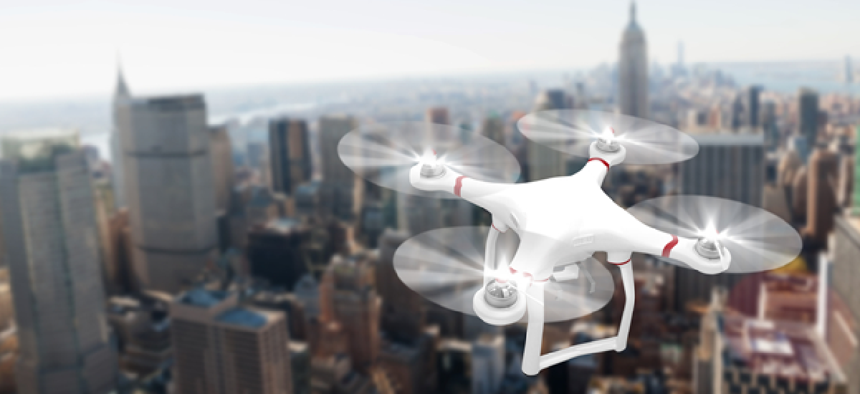White House pushes for drone deterrence authority


Connecting state and local government leaders
A draft bill would let agencies monitor drone radio communications to determine if the aircraft is a threat and then intercept, confiscate and/or destroy it.
The Trump administration wants to give federal agencies the right to track and possibly destroy unmanned aircraft over certain domestic facilities and events.A draft bill would let agencies and law enforcement monitor drone radio communications to determine if the aircraft is a threat to a "covered operation" or facility in the U.S. and then intercept, confiscate and/or destroy the aircraft.
Under the proposed legislation, a "covered operation" could include federal offices, employees, agents or contractors and armed forces, in support of public safety law enforcement or national or homeland security, according to the report in the New York Times.
Those operations would be designated by the head of a department or agency, and would include search and rescue operations, special events, medical evacuations, wildland firefighting, border patrol, law enforcement investigations, prison and detention monitoring, securing ports, nuclear materials transport, military training exercises or emergency response.
The proposed rules, according to the document, would not only help secure events and facilities, but they would also help the law catch up with drone technology. Current federal wiretap statutes that prohibit tapping the content of wireless communications also prohibit accessing the wireless telemetry signals used to pilot drone aircraft remotely, the document said.
The Federal Aviation Administration already has “no drone zones” that cover the National Capitol Region, sports stadiums, airports and military bases, and it issues temporary restrictions in the event of a wildfire or chemical spill or a security-related event, such as a meeting of the United Nations General Assembly.
States have also enacted laws governing drones that run from preemptive laws prohibiting localities from enacting their own rules to those covering privacy, commercial and government use, interference with emergency operations, weaponization and flights near prisons and critical infrastructure.
Anti-drone technology solutions include an NEC surveillance system that uses an ultra-sensitive camera to see the visible part of the spectrum, an infrared camera, an acoustic sensor to listen for sounds of incoming drones produced by propellers and a radio detection finder to triangulate the aircraft’s location.
Batelle’s shoulder-fired electromagnetic cannon directs targeted pules of radio waves towards incoming aircraft to disrupt communications, forcing unmanned aircraft to enter into a manufacturer-set safety mode in which it can either land or return to its starting point. The "point-and-shoot" system has a range of about 400 meters and is designed to disable small drones flying in a 30-degree cone before they can attack civilian or military targets.
Lockheed Martin’s ICARUS uses a multi-spectral sensor system to detect and characterize incoming drones combined with cyber electromagnetic activity that disable them or allows the operator to take control of the drone and move it to a safe area.
Some drone manufacturers include a geofencing capability that integrates data from official no fly zones. Last summer, the Interior Department worked with drone manufacturer DJI on an app that provides real-time alerts and geofencing alarms to drone pilots if they approach zones where aerial firefighting operations are in progress.
And to make it easier for law enforcement to prosecute owners of drones caught carrying contraband or enabling other illegal activity, Department 13 offers a drone forensics service that accesses the device’s sensors, operating system and memory to determine its but GPS position, altitude, direction and other positioning data.
A version of this article was first posted to FCW, a sister site to GCN.
NEXT STORY: Navy demos drone-based mine detection




